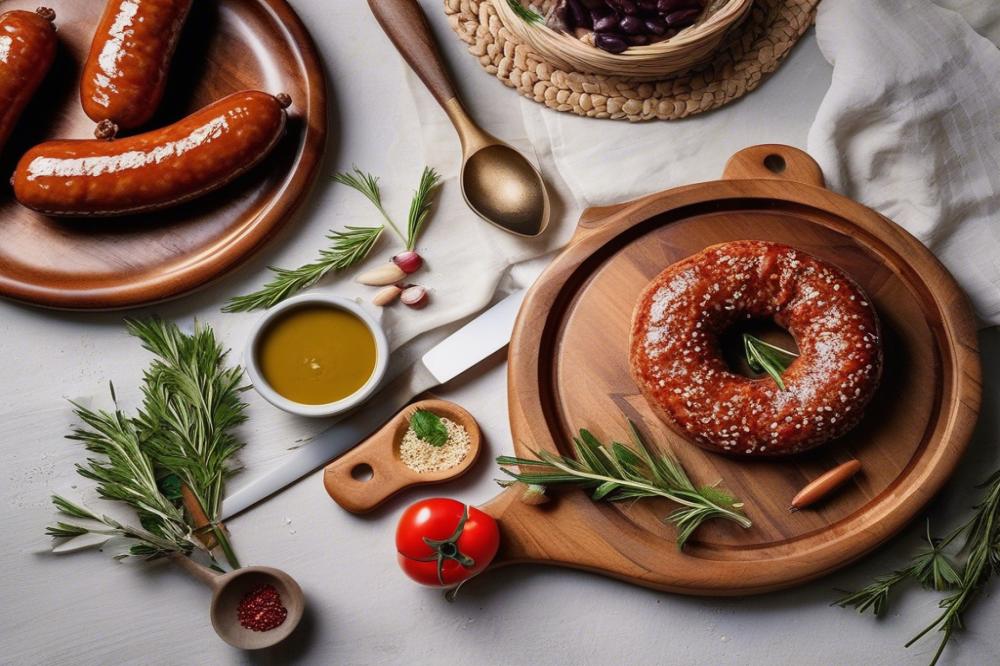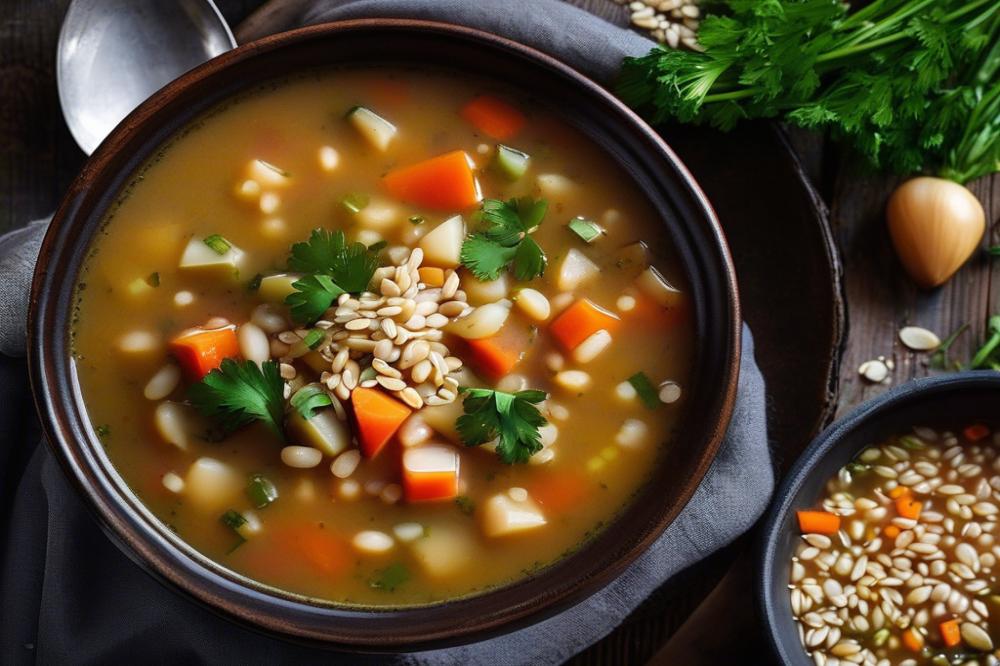Introduction
Greek Loukaniko plays a vital role in Greek cuisine. This pork sausage is known for its rich blend of herbs and spices. Often prepared with orange zest, each bite offers a burst of Mediterranean flavors. Homemade versions of this dish have been passed down through generations, representing family traditions and culinary heritage.
Traditional recipes carry immense cultural significance in Greece. They reflect the region’s history and farming practices. People take pride in making their sausages, using local ingredients. The method of curing meats is both an art and science. It showcases the skills of those who create these delicious treats.
Regional variations exist across the country. Each area may have its own twist on the traditional sausage recipe. Some incorporate different spices, while others may emphasize specific herbs. These unique aspects add to the story of Greek Loukaniko, making it more than just a meal. Enjoying this dish often involves grilling it to perfection, enhancing its flavor even further. No matter where it is made, the essence of this sausage remains close to the hearts of many.
History of Greek Loukaniko
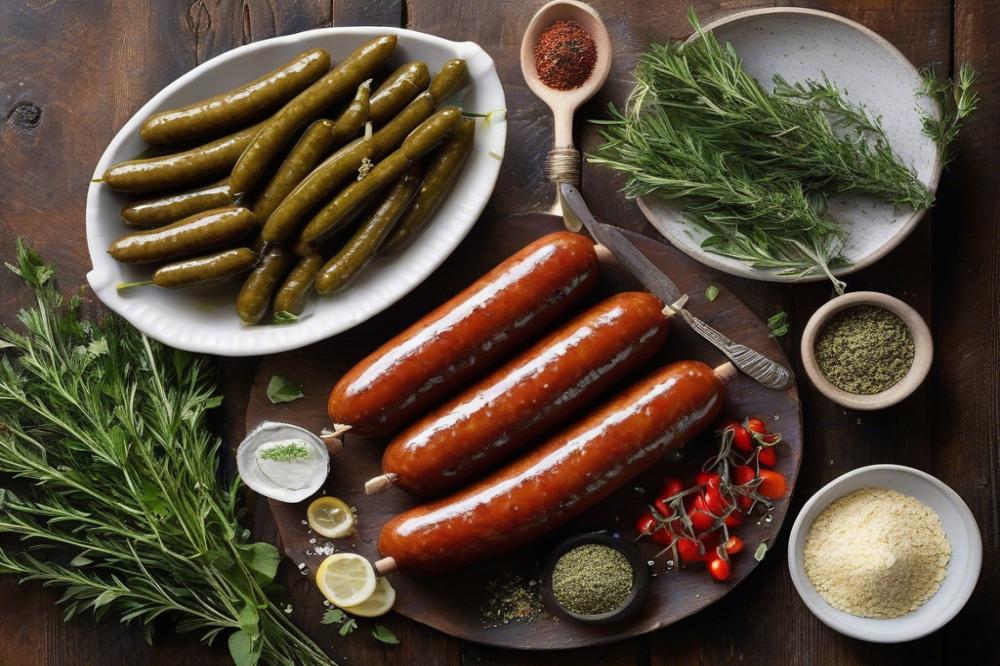
Greek Loukaniko has deep roots in the culinary traditions of Greece. This delicious pork sausage emerged centuries ago. It reflects various influences from the rich landscape of the Mediterranean. The making of this dish generally involves a blend of herbs and spices that create a distinct flavor profile. Also, orange zest often adds a delightful hint of sweetness.
Local ingredients play a significant role in shaping its many variations across Greece. For example, regions with abundant citrus trees might infuse their sausages with more orange elements. Other areas may focus on different herbs unique to their environment. This adaptation allows for a diverse range of tastes, appealing to different palates. Each community holds its own secrets to the ideal blend of spices.
Festive occasions often call for Loukaniko. It can be found sizzling on grills during family gatherings or celebrations. Friends and family come together, enjoying its robust flavor. Such gatherings highlight its importance in social traditions. People reminisce about the delightful aromas filling the air while the sausages cook.
Throughout history, Loukaniko was a way to preserve meats, crucial before refrigeration became common. This method of curing and flavoring meats paved the way for what is enjoyed today. From village fairs to weddings, the sausage has become integral to Greek events. Whether served as an appetizer or main dish, it showcases the essence of Greek cuisine.
Regional variations add depth to the history of this beloved dish. Certain areas even have specific recipes passed down through generations. Differences might include the choice of herbs or the preparation method. The evolution of Loukaniko reflects not only regional tastes but also the changing culinary landscape of Greece.
Ingredients and Cooking Instructions
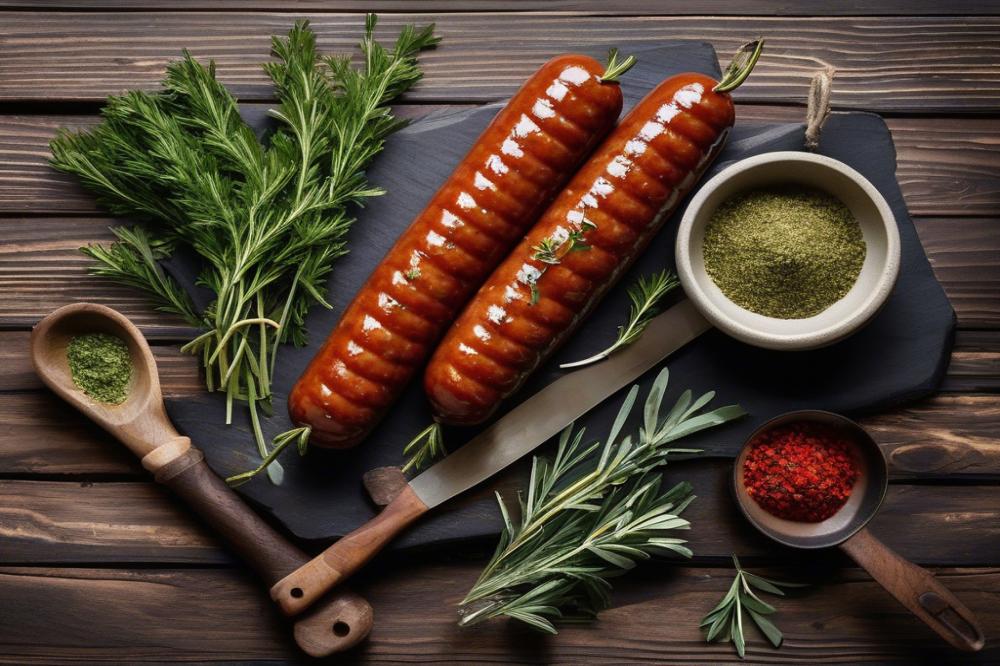
To create authentic Greek Loukaniko, you’ll need a blend of rich flavors and quality ingredients. This traditional pork sausage is a staple in Greek cuisine and embodies the essence of Mediterranean flavors.
Ingredients
- 1 kg pork shoulder, diced
- 200 g pork fat, diced
- 1/2 cup red wine (preferably Greek)
- 1 tablespoon dried oregano
- 1 tablespoon thyme
- 1 tablespoon black pepper
- 1 teaspoon salt
- Zest of 1 orange
- 4 cloves garlic, minced
- Natural hog casings (for stuffing)
Nutritional Information
Each 100 g serving provides:
- Calories: 300
- Protein: 23 g
- Fat: 22 g
- Carbohydrates: 0 g
- Sodium: 600 mg
Cooking Instructions
Start by combining the diced pork shoulder and fat in a large mixing bowl. This mixture forms the heart of your sausage, bringing together rich flavors from the meat and the added fat. Next, add minced garlic, dried oregano, thyme, black pepper, salt, and the zest of one orange. The orange zest adds a refreshing twist that is a hallmark of regional variations found throughout Greece. Pour in the red wine and stir well until all ingredients are evenly incorporated.
Stuff the flavorful mixture into natural hog casings, twisting them into sausage shapes. Tie the ends securely to prevent any filling from escaping. Once they are tied, place the sausages in the refrigerator for a whole day to allow them to cure. This process enhances their flavor, resulting in delicious cured meats ready for cooking.
After curing, it’s time to grill these homemade delights. Preheat the grill over medium heat and carefully place the sausages on it. Grill for about 15-20 minutes, turning frequently to ensure they cook evenly. The aroma of herbs and spices will fill the air, making it hard to resist. Serve them hot, and enjoy the exquisite taste of traditional pork sausage.
Serving Suggestions
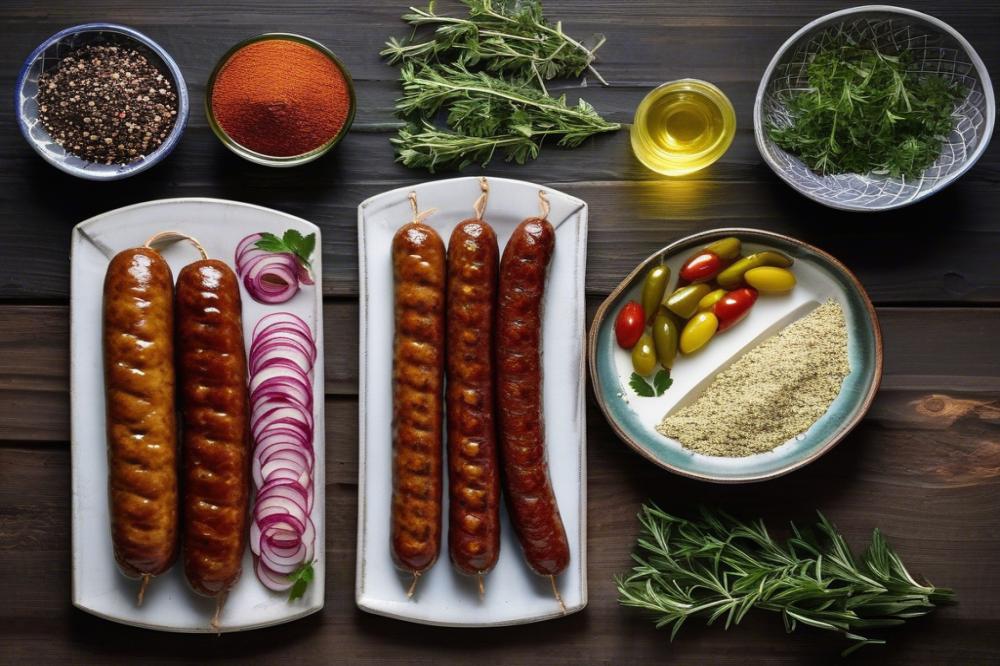
Greek Loukaniko sausages bring a burst of flavor to the table. Often made with pork, these sausages get their special taste from a mix of herbs and spices, along with a hint of orange zest. Finding the right sides can enhance the meal even further.
Tzatziki is a classic choice. This yogurt-based sauce pairs beautifully with the vibrant flavors of the sausage. Its coolness balances out the richness of the pork. Additionally, serving it with warm pita bread creates a delightful combination. Guests can scoop up the tzatziki or tuck pieces of the sausage inside the pita for a satisfying bite.
A Greek salad offers another excellent accompaniment. Fresh tomatoes, cucumbers, olives, and feta provide refreshing contrasts. The acidity of the dressing helps to cut through the richness of the sausage. Each bite brings a taste of summer, even in colder months.
Consider grilling the Loukaniko for added flavor. The smoky aroma fills the air, creating anticipation for the meal ahead. When finished, serve them alongside a platter of regional cured meats. The variety of textures and flavors encourages sharing, which is a big part of Greek cuisine.
Loukaniko can elevate gatherings with its Mediterranean flavors. Whether it’s a casual cookout or a festive family feast, this dish is sure to impress. Explore different regional variations, as each area of Greece offers a unique twist on this beloved sausage. This exploration not only warms the stomach but also the heart, reminding us of the shared traditions and flavors of Greek culture.
Regional Variations of Loukaniko
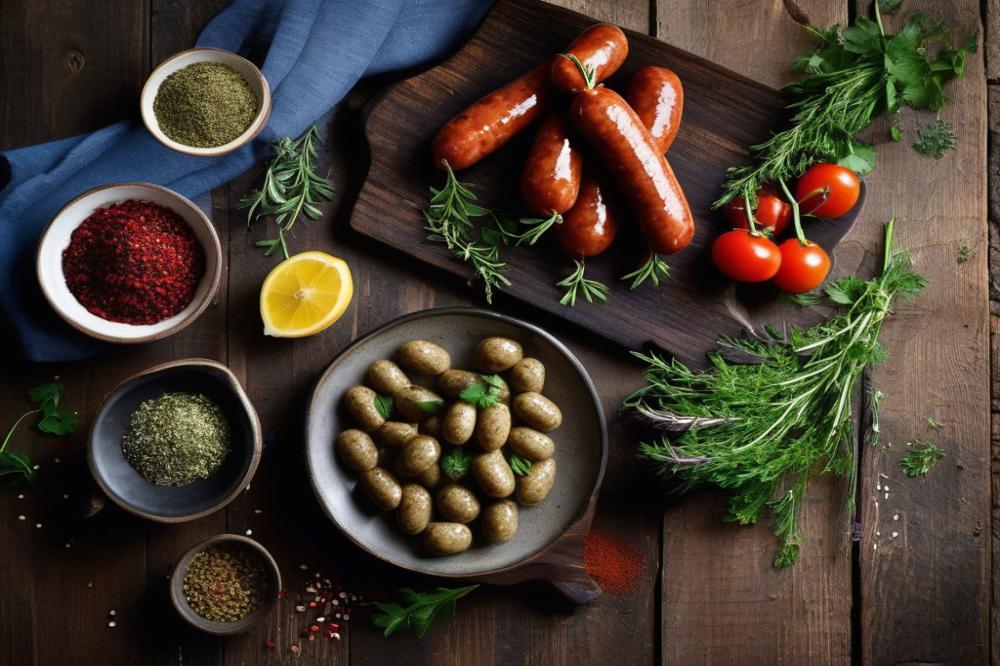
Exploring different styles of loukaniko reveals the culinary diversity of Greece. Each region has its twist on the beloved pork sausage. Local customs play a big role in how these sausages are prepared and enjoyed. From the mountains of Epirus to the islands of Crete, variations abound.
In the northern regions, such as Macedonia, you might find loukaniko made with a blend of spices. The addition of allspice and nutmeg gives it a distinct flavor that stands out. Further south, in the Peloponnese, orange zest is often a key ingredient. This adds a refreshing citrus touch, enhancing the Mediterranean flavors in every bite.
Crete takes a different approach. Here, the combination of local herbs is celebrated. Oregano, thyme, and sometimes even wild sage are mixed into the meat. This reflects the island’s rich, agricultural history. Many Cretans prefer to prepare their sausages homemade, passing down recipes from generation to generation.
Grilling is a cherished tradition when it comes to enjoying loukaniko. Throughout Greece, families gather around a grill during summer, where cured meats sizzle and aromatic herbs fill the air. In some areas, this sausage is served with a side of bread and olives. Others choose to pair it with local wines, creating a feast for the senses.
While some regions focus on the sweetness of orange zest, others might add a kick with chili flakes. No two recipes are identical. Variations keep the spirit of Greek cuisine alive, showcasing the creativity of each locality. Culinary creativity is visible in how people enjoy their sausages, whether in casual settings or festive occasions.
Each bite of loukaniko tells a story of place and culture. It’s not just food; it’s a connection to the land and its traditions. People love to celebrate these differences. Discovering the variety of flavors unveils the heart of Greek culinary heritage.
Final Thoughts on Greek Loukaniko
The significance of the pork sausage in Greek cuisine cannot be overstated. Deeply rooted in tradition, loukaniko reflects the flavors and aromas of Greece. These sausages bring families together, especially during festive gatherings and outdoor barbecues. Each region has its own twist on the recipe, showcasing local herbs and spices.
Trying a homemade version can be a delightful experience. It allows for creativity and personalization. Exploring different regional styles offers a wonderful opportunity to appreciate the diverse culinary landscape of Greece. You might discover a new favorite variation. The joy of cooking traditional recipes lies in the connection to the past. It helps preserve recipes that have been passed down through generations.
Cooking can be a rewarding journey. Embracing the process of making something from scratch can deepen one’s appreciation for meals shared with loved ones. Engage with the flavors, textures, and smells that define this cherished dish. Making loukaniko can inspire curiosity about other authentic Greek dishes waiting to be discovered.
In closing, consider stepping into the kitchen to try your hand at this iconic recipe. Each bite is a taste of history that ties one to the Mediterranean roots of culinary culture. Celebrate the beauty of home cooking and keep traditions alive with every savory sausage made.

